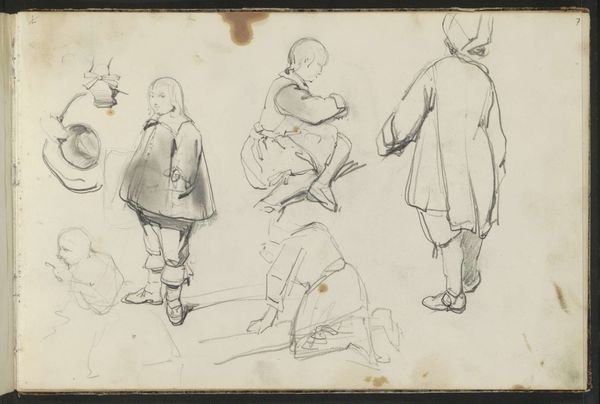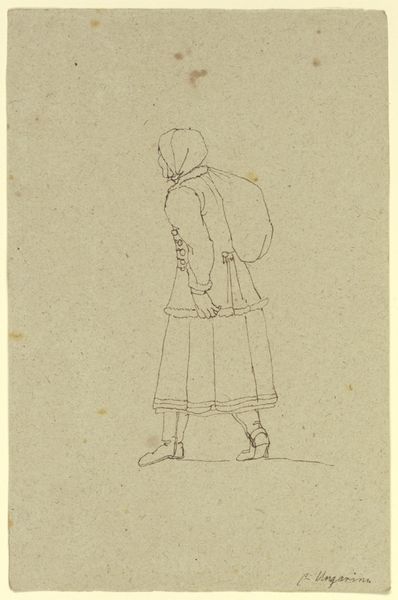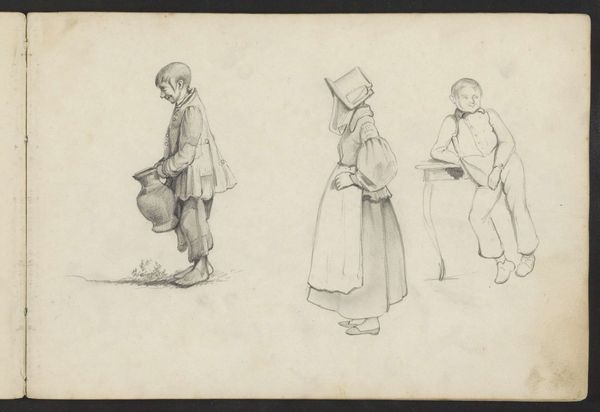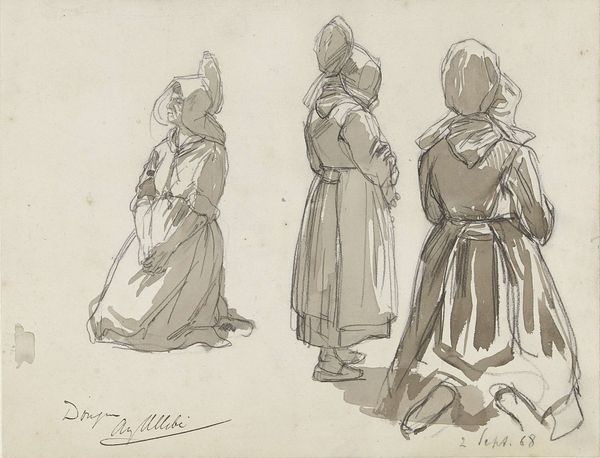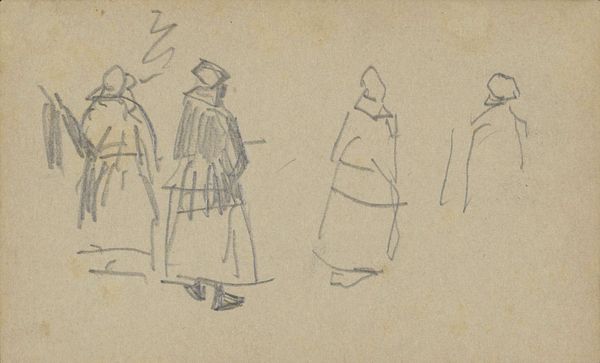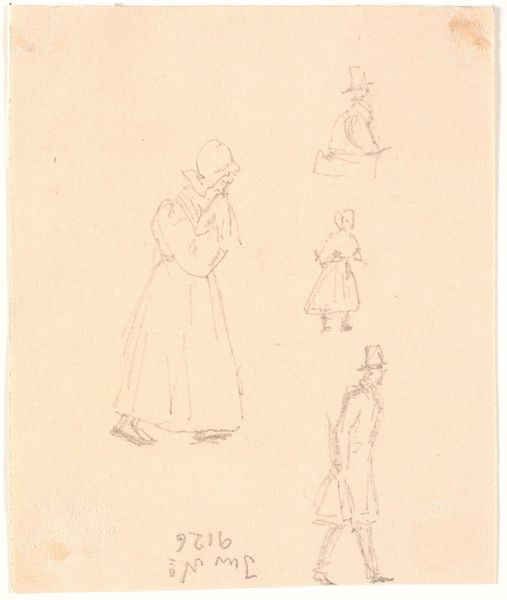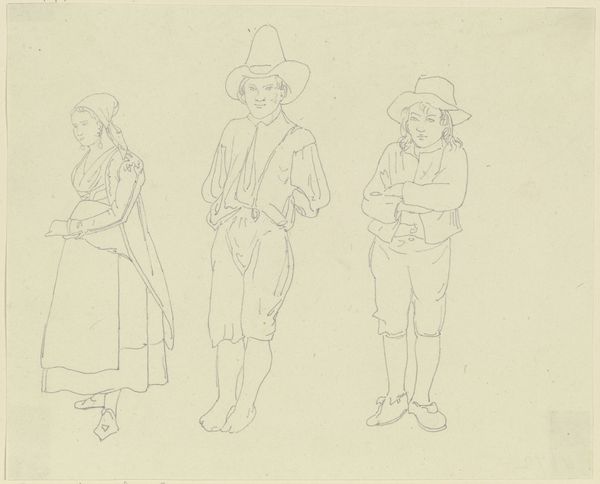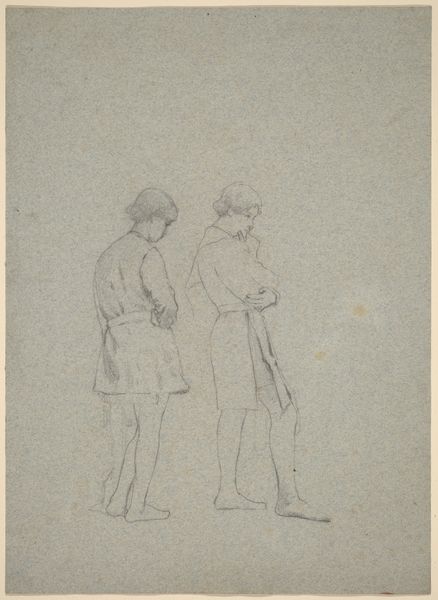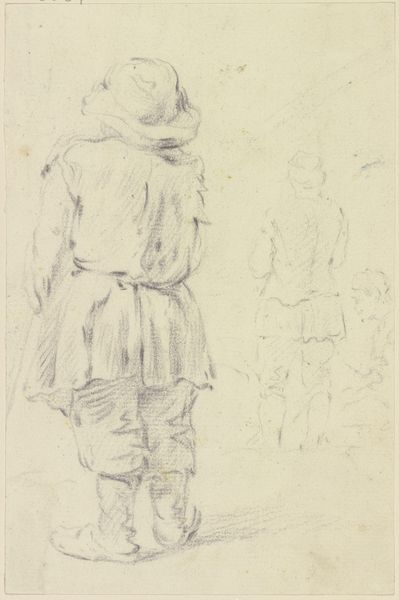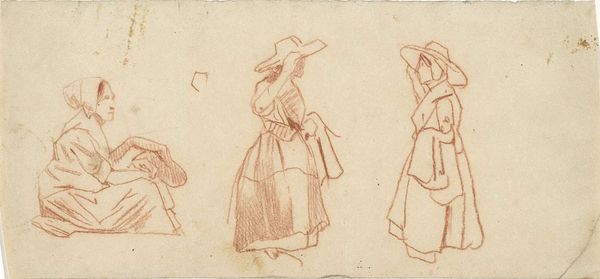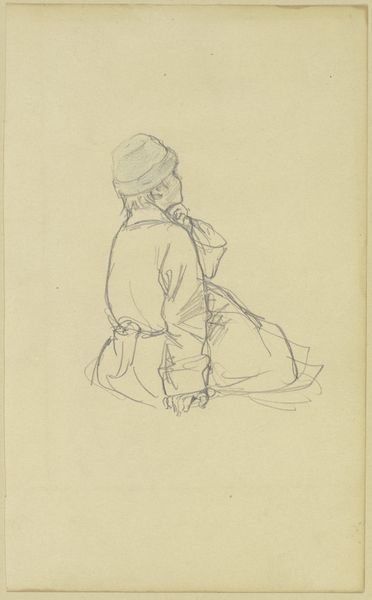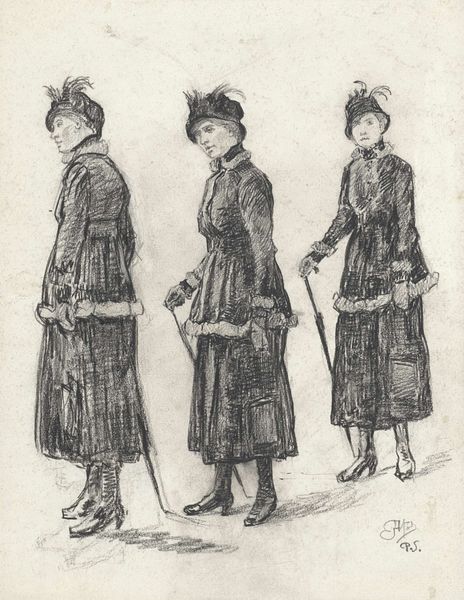
drawing, pencil, chalk
#
portrait
#
drawing
#
16_19th-century
#
pencil
#
chalk
#
genre-painting
Copyright: Public Domain
Curator: Here we have “Russisches Kind in drei Ansichten”, or "Russian Child in Three Views," a drawing attributed to Wilhelm Amandus Beer, residing here at the Städel Museum. It appears to be rendered with pencil and chalk. Editor: My initial impression is of stillness. It's interesting how the artist has captured this child from three perspectives, yet there's a quiet uniformity to the figure that evokes a sense of the subject almost receding into the background, in part because of the grey paper, as if the figure and ground have nearly the same tonality. Curator: Beer was working in a period increasingly preoccupied with Realism. Genre paintings like this served a critical social function. Images of everyday life, and even anonymous figures, granted dignity to ordinary people and often spoke to cultural trends and issues of the time. Here, you might imagine Beer documenting types within a changing society. Editor: Exactly, and there is an inherent tension there. We look at what seems like a simple study but we also must ask questions about the way representation intersects with issues of identity, labor, and power. How does the gaze, even in these sketched studies, frame childhood within specific socio-economic contexts? Are these children romanticized, or are they subjects within a narrative that reinforces particular ideas about Russian culture? Curator: Considering Russia at this historical juncture, depictions of rural life, particularly children, often carried a dual significance. They could reinforce nationalistic ideals—a romanticized vision of traditional peasantry—or, conversely, subtly critique social conditions. So much art production was tied up with solidifying a sense of national identity. Editor: Yes, and even this seeming artlessness speaks volumes about the prevailing views of children and nationhood in 19th-century Russia. Are they emblems of an idealized past, or witnesses to a present grappling with change? It seems Beer invites us to contemplate more than just the visual form, but the narratives that art creates and recreates. Curator: Absolutely. Thank you for adding that dimension. Next we'll consider . . . Editor: I'm looking forward to it!
Comments
No comments
Be the first to comment and join the conversation on the ultimate creative platform.
